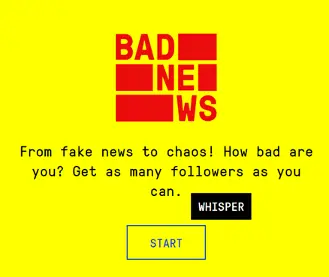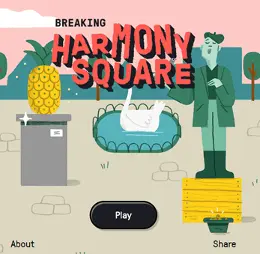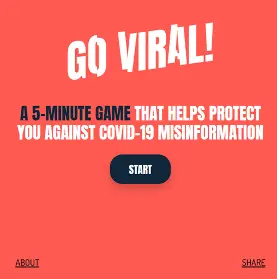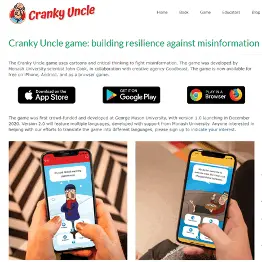
Bad News game (Bad News, 2021)
Roozenbeck and van den Linden (Roozenbeek & van der Linden, 2019) designed an experimental game called Bad News!. This game puts people in the position of a person who produces and disseminates fake news. The player's aim in the game is to obtain as many followers and shares as possible through creating and sharing different fake news items.
Subjects exposed to the game tended to increase their willingness to engage in critical thinking and to take time to evaluate the accuracy of headlines that researchers exposed them to. After conducting several experiments with a small number of participants (95 in one case and 15000 in another), Roozenbeck and van den Linden (Roozenbeek & van der Linden, 2019) concluded that subjects who had been inoculated against fake news were much more likely to rate fake news as having lower accuracy than real news.
This effect was manifested both in cases in which participants were divided into a control group and an experimental group and in the case in which the same people were surveyed before and after playing the Bad News game. A similar result was achieved by Basol, Roozenbeck and van den Linden (Basol, Roozenbeek, & van der Linden, 2021), with an experimental design based on a control group and a treatment group. Lewandowsky and van den Linden (Lewandowsky & van den Linden, 2021) and Pennycook and Rand (Pennycook & Rand, 2021) summarize the results of the same experiments and show that people who take time to think and evaluate what they see, will be less likely to believe or share disinformation. This leads the researchers to argue that pre-bunking is much more efficient than debunking given that it considerably decreases willingness to believe and share news of a dubious provenance. Van den Linden et al. (van der Linden, Leiserowitz, Rosenthal, & Maibach, 2017) adapted the Bad News game to include information about the COVID-19 pandemic but did not conduct any experiments on the success of this adapted version.








